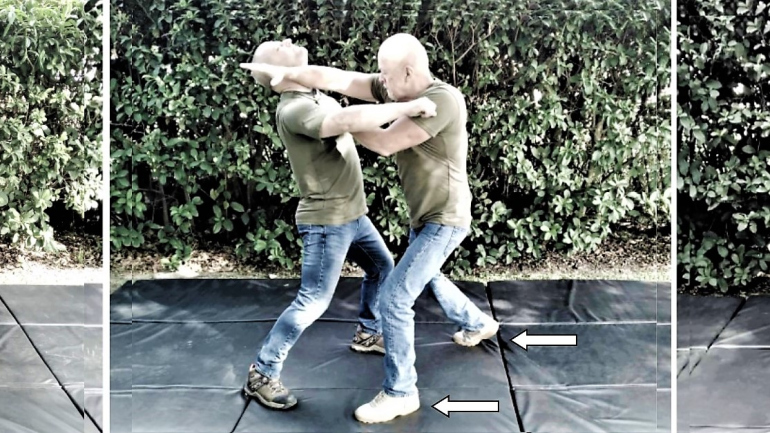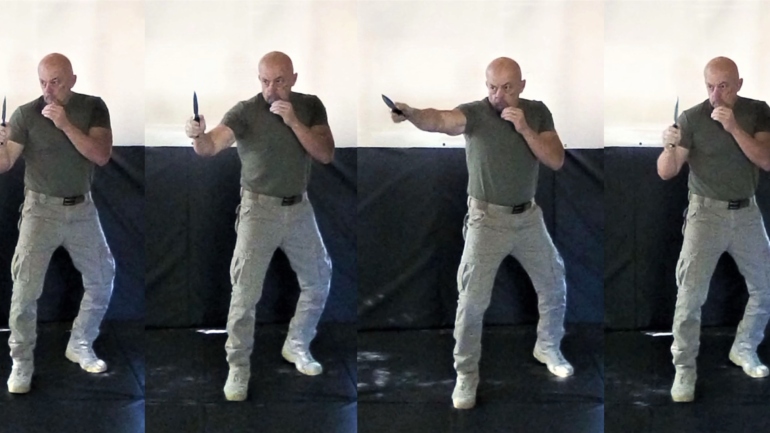COMBAT JUDO was originally developed to address the needs of military personnel, facing new hand-to-hand combat challenges, as a way to ensure a streamlined, tested, and effective method of self-defense. Combat judo’s roots stem from WWI. A combination of judo and boxing, this fighting method was found to be extremely effective in trench warfare during the latter half of WWI. It wasn’t until WWII that it was referred to as “Combat Judo” this was done to distinguish it from traditional martial arts systems.
RIGHT VS RIGHT SITUATION VS A LEAD JAB
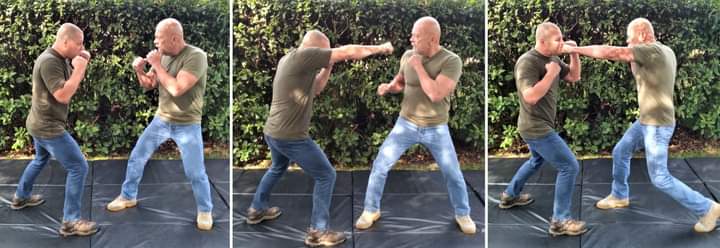 1.) Both you and your opponent are fighting out of a right side forward stance.
1.) Both you and your opponent are fighting out of a right side forward stance.
2.) The opponent throws a right lead jab to the head. Pull back from the opponent by shifting your body weight to the rear leg and leaning your upper body backward to avoid the jab. You want to pull back just enough to make him miss.
3.) Immediately follow his jab with a straight left punch to the opponent’s head. Both feet should pivot clockwise with your toes pointing toward the twelve o’clock position as you throw the left punch. Your chin should be tucked behind your left shoulder and your right hand is up to protect the right side of your head.
 4.) Pivot counter – clockwise on both feet (toes of both feet should end up pointing toward the nine o’clock position) and a right corkscrew punch over the top of his left guard to the side of his jaw.
4.) Pivot counter – clockwise on both feet (toes of both feet should end up pointing toward the nine o’clock position) and a right corkscrew punch over the top of his left guard to the side of his jaw.
5.) Pivot clockwise on both feet (toes should be pointing toward the twelve o’clock position) and strike your opponent’s right shoulder with a left heel of palm strike and grab his clothing at the area struck. The shoulder strike should rock him back on his heels.
6.) With a short quick jerk, keeping your elbow up, pull him into you. Rake across his ribs and sternum with a right horizontal elbow strike as you step your right foot to the inside of his right foot.
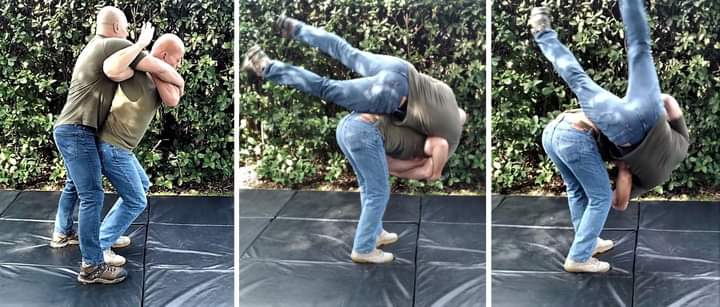 7.) Pivot on your right foot counter – clockwise and bring your left foot back between your opponent’s feet. Simultaneously pull the opponent forward and bring your right arm up under his right arm. Pinch his right bicep between your right bicep and forearm. Note: The toes of both of your feet should be in line with the toes of his right foot. Your knees should be bent and your axis forward. Your belt line should be a few inches lower than your opponent’s beltline. Your opponent should be up on his toes, his balance broken forward.
7.) Pivot on your right foot counter – clockwise and bring your left foot back between your opponent’s feet. Simultaneously pull the opponent forward and bring your right arm up under his right arm. Pinch his right bicep between your right bicep and forearm. Note: The toes of both of your feet should be in line with the toes of his right foot. Your knees should be bent and your axis forward. Your belt line should be a few inches lower than your opponent’s beltline. Your opponent should be up on his toes, his balance broken forward.
8.) Straighten your legs and bend at the waist popping your hips up lifting him into the air (this is an explosive movement).
9.) Keeping your grip on the opponent, bring your left elbow downward, twisting your upper body toward your left hip to finish the throw.
Note: You should not feel like you are muscling your opponent onto your hips. If you feel like you are picking him up with your arms to get him over this generally means: 1.) your entry is too high; your knees aren’t bent enough and your hips are not lower than your opponent’s hips. A good rule of thumb is to ensure that your belt line is a few inches lower than his belt line. 2.) You aren’t stepping in deep enough.
For more articles and information go to https://combatjudo.blogspot.com/
